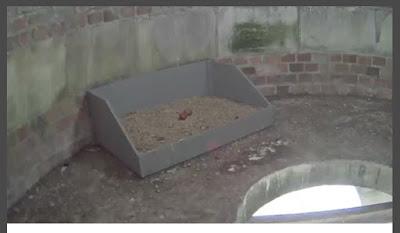Last Sunday (18th March) we had another significant snowfall here. To get any snow at all here is unusual but I've never known a winter where we've had more than one period of snow.
 |
| Goosander in the cold Avon |
 |
| The snow didn't stop this robin from singing |
Rather than turning over stones this bird was searching through the seaweed for food. They mostly eat insects, crustaceans and molluscs(1)- it looks like it might have found a small crab in the first photo. Unlike most waders though turnstones will happily scavenge anything they can find and have been recorded feeding on coconuts and even human corpses!
An even more stunning bird was this curlew which was right next to the path.
You wouldn't think a brown bird could be so beautiful, would you? Curlews can be seen all along the South coast during the winter but this area is the only part where they can be seen all year around, both along the Solent estuary and in the New Forest(2), though their numbers are in decline.
At my work in Bournemouth this week I've seen the car park fox for the first time in a little while.
Given the size this fox appears to be a vixen. This is the time of year when vixens are pregnant(3) so they are likely to be a little more lethargic than they are at other times. For several days running this vixen was curled up in the corner of the car park in a sunbeam- it's probably the warmest place around at that time of day.
I was disappointed to see a woman shoo this fox away one morning. I work in a school so I'm assuming she was worried that the fox might be a threat to the children. Foxes attacking humans are minutely small though, especially a small vixen like this one, and the far end of the car park is some distance away from the nearest playground. It's really brightened my morning to see this fox and it's disheartening to think some see it as a vicious monster which it clearly is not.
Over the last few years I've been following the peregrine falcon nest in a clock tower in the Lansdowne area of the town. In 2016 the first egg was laid on the 15th March and in 2017 the 16th March. This year however it was still quite cold by that time and there was no sign any eggs. Finally, the first egg was laid with just minutes left of the 21st of March.
Clearly the cold winter has meant the falcons delayed laying this year. I kept an eye out on the camera over the next few days and enjoyed some good views of both adults.
I thought I'd just check on the nest before finishing this blog post and discovered that a second egg was laid at 12:58 this afternoon!
This pair typically have four eggs so I would expect the same again this year. They should start hatching towards the end of April. You can watch all this for yourself on the webcam here.
That's all for today but hopefully I'll be out and about lots over the next few weeks so stay tuned to see what I spot.
2: RSPB- Curlew
3: Jones, L.(2016) Foxes Unearthed: A Story of Love and Loathing in Modern Britain










No comments:
Post a Comment